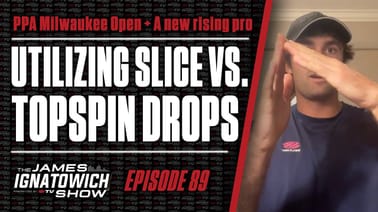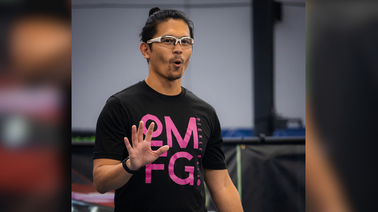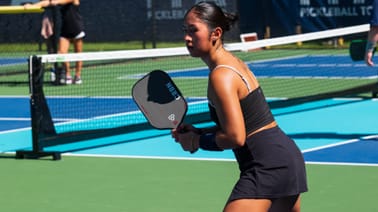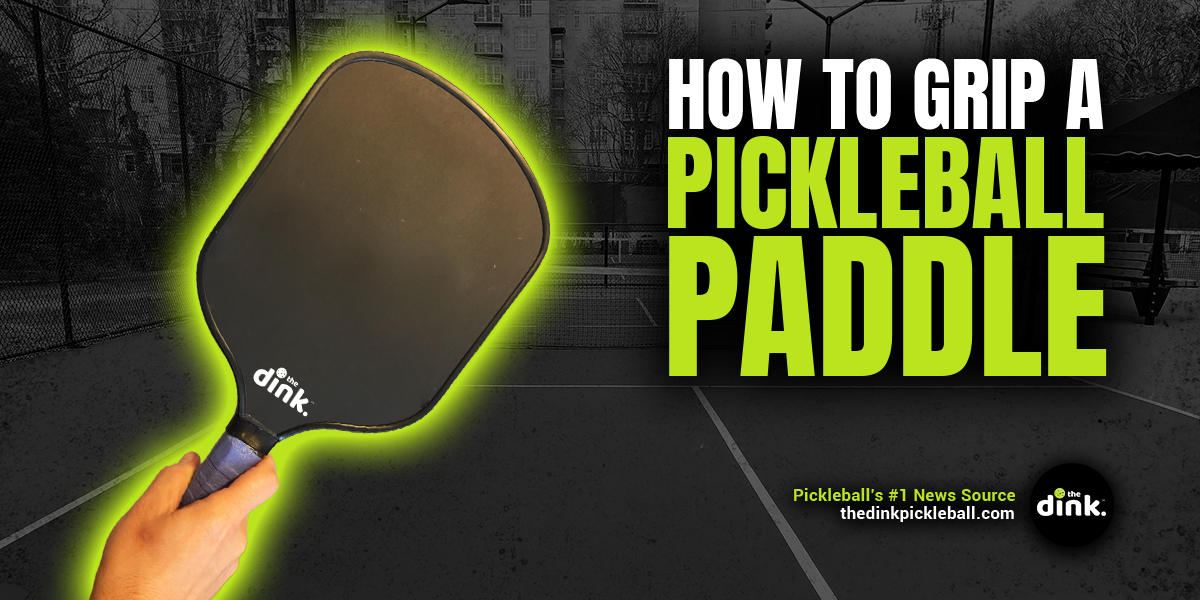
Get a Grip: The Different Ways You Can Hold Your Pickleball Paddle
If you don't have a tennis or other racquet sport background when you come over to pickleball, you may not be aware that there are different grips players like to use when holding their pickleball paddles.
The three main grips:
- Continental
- Eastern (or Semi-Eastern)
- Western (or Semi-Western)
Of those three, 99 percent of players use either a Continental or an Eastern grip.
We'll discuss the three main grips and provide the pros and cons for each.
The Continental Grip
The Continental grip is the most commonly taught and widely used grip in pickleball. It's an easy grip to understand and super versatile for every shot you'll need to make.
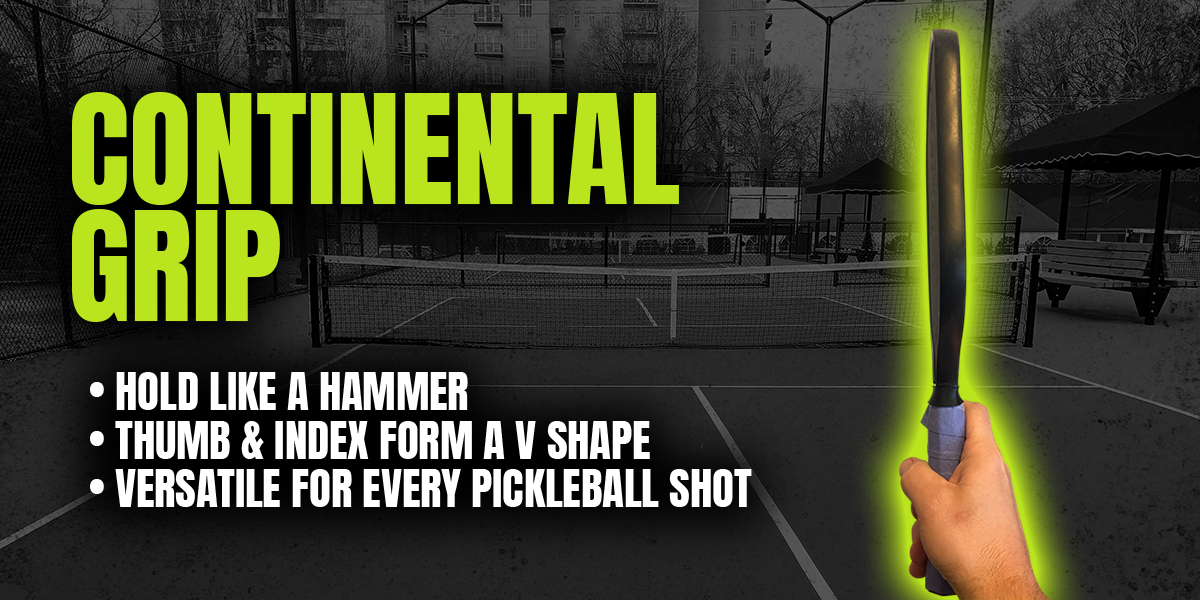
It's also one of the most commonly used grips in tennis (Western being the other).
Perhaps the easiest way to find this grip is to imagine how you would use a hammer. You wouldn't turn the hammer sideways; instead, it would be straight up and down.
Your thumb and index finger should form a V when you look down at your hand.
In tennis, they teach you to find these grips by counting the bevels on the endcap of the racquet. In the image below, start with one at the top and count as you go along.
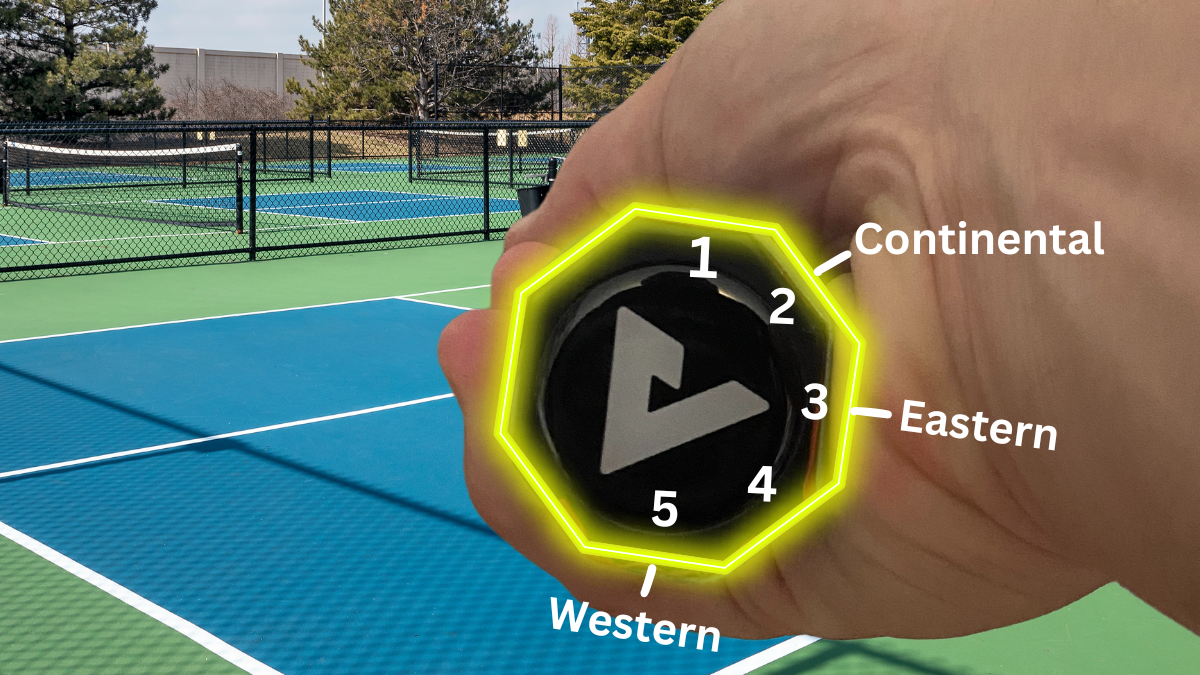
For a Continental, the tip of the V (between your thumb and forefinger) is in line with the second bevel.
Pros of the Continental Grip
- You can use it for almost every shot
- It allows you to switch between a forehand or backhand
- Favors backhand shots, which is what players use most at the kitchen line
Cons of the Continental Grip
- It is more challenging to switch to a forehand quickly
- It doesn't naturally add topspin to shots
- Almost impossible to use for a backhand flick at the net
The Eastern Grip
The Eastern or semi-Eastern grip is very similar to the Continental grip, except the V of the hand is over slightly (in line with bevel number three), creating an angled paddle face.
Many call this the handshake grip, because it resembles the position of your hand if you were to offer it for a handshake.
A semi-Eastern means your grip is between a Continental and a full Eastern. Instead of being over one or two bevels, you might adjust so that you're just half a bevel over.
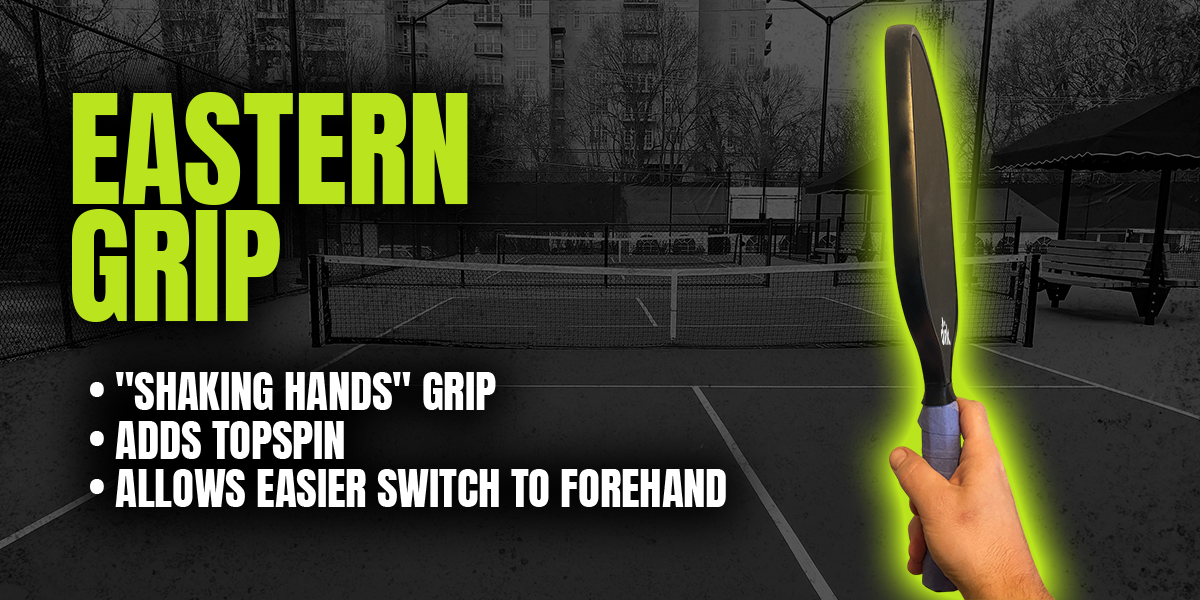
Pros of the Eastern Grip
- The angle it creates allows you to naturally add topspin to shots - making it a preferred grip for singles players
- It allows for quicker switching to a forehand in a hands battle
- Enables the player to switch between forehand and backhand relatively quickly
Cons of the Eastern Grip
- Getting to your backhand is slightly tougher
- Adding topspin takes some adjustment of your arm angle
- It could start off causing more pop-ups as you adjust to the angled face
The Western Grip
While this grip is rare (only a few pros use it - most notably, Riley Newman), the Western Grip still has its place in pickleball, even if you only use it for specific shots.

To find a Western grip (also known as a pancake or frying pan grip), you would place your paddle flat on the ground, reach down, and pick it up like you would a frying pan.
The paddle's face should be completely flat, and when you look down at it, you should see the back of your knuckles.
You can also imagine holding a sign up for people standing in front of you to read.
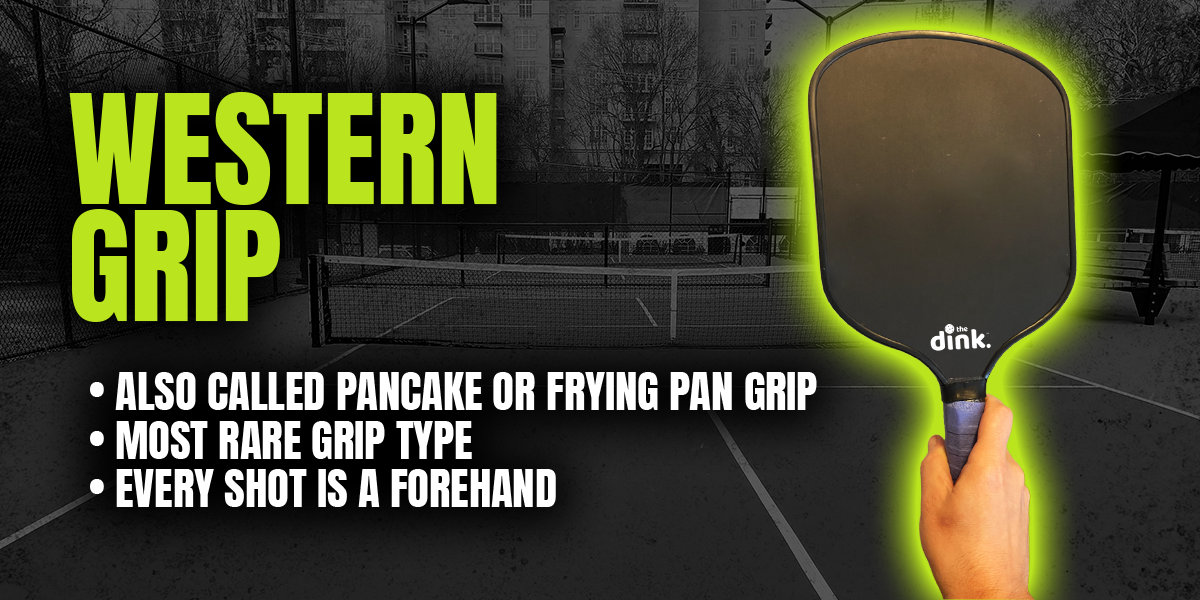
The Pros of a Western Grip
There aren't many pros to this grip, which is why it's not often used. However, for very specific shots, it's great.
- Every shot is a forehand
- Excellent for performing scorpion shots
- Allows you to add max topspin
The Cons of a Western Grip
- It's hard to generate a lot of power
- Your backhand is virtually non-existent
- You must be athletic since you'll be running around to your forehand a lot
- Very difficult to master
Other things to know about pickleball grips
Now that you better understand the different types of grips, a few other nuances are worth discussing.
Finger or no finger?
If you have a table tennis background, you may find it natural to place your index finger along the neck of your pickleball paddle.
Similar to this:
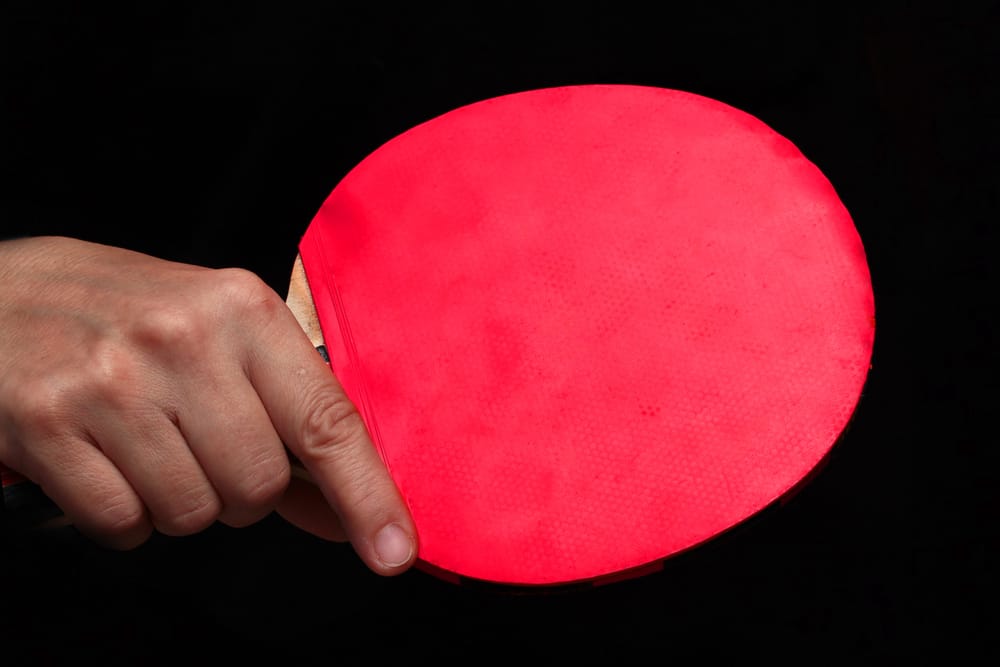
Some players worry that this is incorrect. However, if you're comfortable doing it, there is nothing wrong with it.
It is important to note that by having this sort of grip, you will lose some power in your shots. However, what you sacrifice in power you will likely gain with control.
If you currently hold your paddle this way, challenge yourself to try not holding it like that for several games and see how your game changes. If it doesn't work, go back to it and stick with it.
Several pro pickleball players, including Tyler Loong and Callan Dawson, use this type of grip.
Two-handed backhand grips
Anyone who has watched pro pickleball over the last year has noticed that more pros are using a two-handed backhand. It's become a great weapon for many pros, including Connor Garnett, and there's no reason to think it's going away anytime soon.
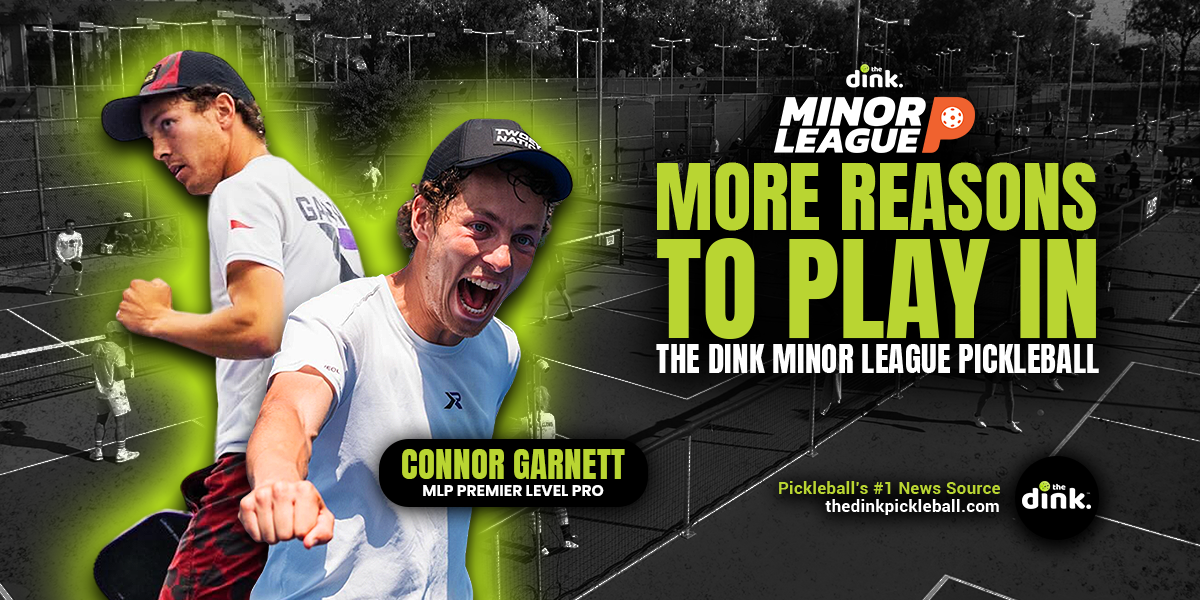
The key to a two-handed backhand grip is in your offhand. Similar to how you see the finger across the neck of the paddle above, you want to do that with your top hand (left hand if you're a right; right hand if you're a lefty).
Using your finger like that will help you stabilize and add power to your shot.
Tanner Tomassi (known as Tanner Pickleball) explains it in under 60 seconds here:
How high up to grip the handle
It is completely up to you whether you like to put your hand(s) up closer to the neck or down near the endcap.
The only thing to understand is that by having your hands lower, you are "lengthening" the paddle, which will help you generate more whip and power – but lose some control.
If you hold your hand(s) higher near the neck, you will gain more control and lose some of that whippiness.
It's best to experiment with your hand placement and see what works for you. You can even hold your paddle lower when serving and higher when you are closer to the net.
Let's talk about grip pressure
The last important aspect of your grip that must be discussed is how much pressure to use when gripping the paddle.
Typically, when talking about grip pressure, we'll use a scale of 1-10, with one being that you are barely holding onto it and 10 being a complete death grip.
You want your grip pressure to be in the 3-4 range for most shots. So, you should feel like you have a good grasp on the paddle – and a strong wind won't knock it out of your hand – but it shouldn't feel like you can't turn it easily by simply moving your wrist.
This is important because our bodies tense up when we tighten our muscles (like in a big match or on a final point). That tenseness can cause us to overhit or pop up more balls.
Keeping a lighter grip allows us to execute our shots without making our entire bodies tense up.
You'll want your grip pressure a bit higher for block shots or defending drives – maybe a 5-6 – but it shouldn't go above that.
If you struggle with handling drives, instead of increasing your grip pressure, try holding the paddle more upright (so the tip is facing more up) and placing your grip closer to the neck. You can even add extra control on block shots by putting your second hand on the paddle.
If you'd like to see a video on grips, we suggest this one from John Cincola:
One final note on grips
Regardless of what you've been taught or learned from reading this, the most important factor when considering which grip is right for you is what feels the most comfortable.
If you stick with it long enough, any grip can become the right grip. You'll learn how to swing properly or alter your technique to suit your chosen grip.
However, if you're never comfortable in a specific grip, that will always be an issue.
If you're unsure which grip is right for you, try each over several games to see which feels the best.






